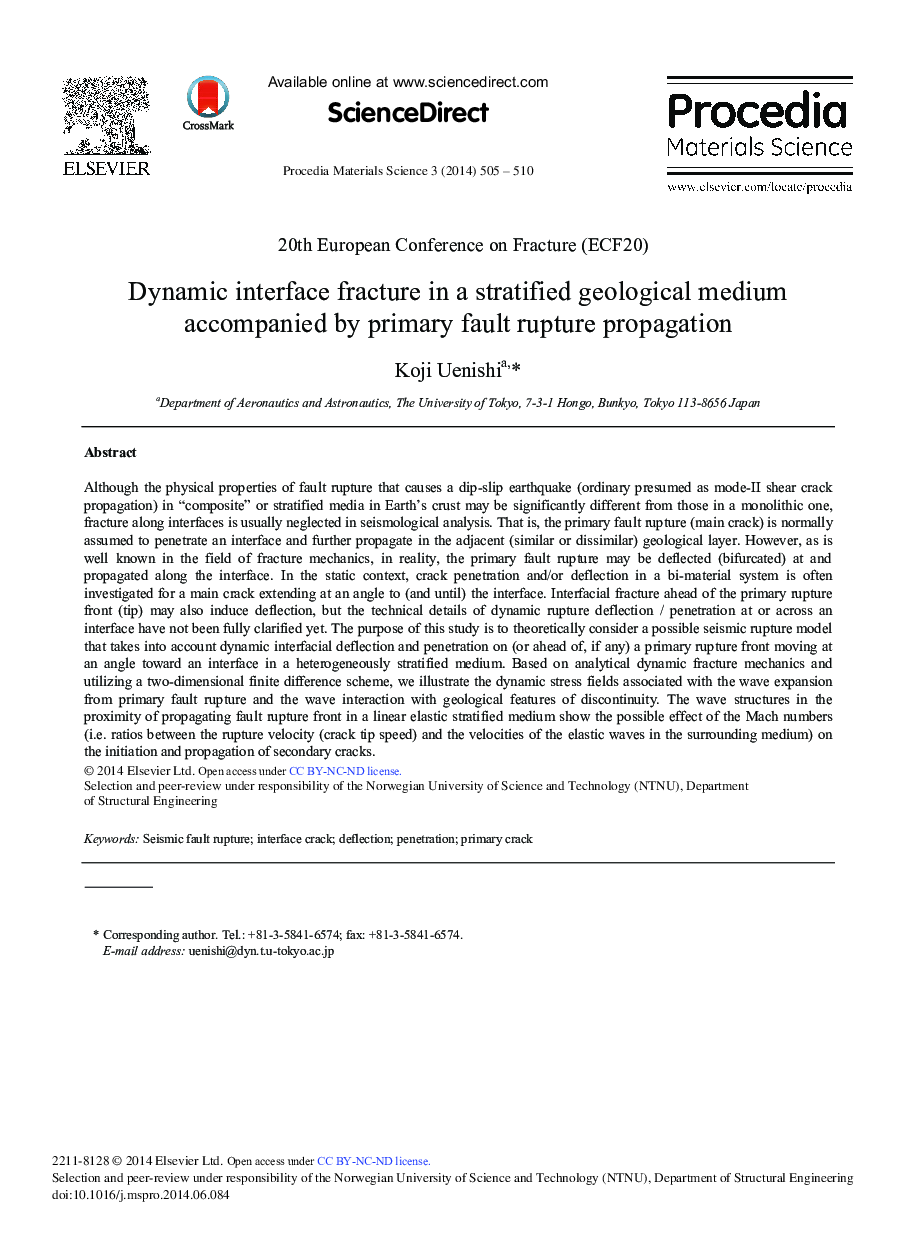| Article ID | Journal | Published Year | Pages | File Type |
|---|---|---|---|---|
| 1634824 | Procedia Materials Science | 2014 | 6 Pages |
Although the physical properties of fault rupture that causes a dip-slip earthquake (ordinary presumed as mode-II shear crack propagation) in “composite” or stratified media in Earth's crust may be significantly different from those in a monolithic one, fracture along interfaces is usually neglected in seismological analysis. That is, the primary fault rupture (main crack) is normally assumed to penetrate an interface and further propagate in the adjacent (similar or dissimilar) geological layer. However, as is well known in the field of fracture mechanics, in reality, the primary fault rupture may be deflected (bifurcated) at and propagated along the interface. In the static context, crack penetration and/or deflection in a bi-material system is often investigated for a main crack extending at an angle to (and until) the interface. Interfacial fracture ahead of the primary rupture front (tip) may also induce deflection, but the technical details of dynamic rupture deflection/penetration at or across an interface have not been fully clarified yet. The purpose of this study is to theoretically consider a possible seismic rupture model that takes into account dynamic interfacial deflection and penetration on (or ahead of, if any) a primary rupture front moving at an angle toward an interface in a heterogeneously stratified medium. Based on analytical dynamic fracture mechanics and utilizing a two-dimensional finite difference scheme, we illustrate the dynamic stress fields associated with the wave expansion from primary fault rupture and the wave interaction with geological features of discontinuity. The wave structures in the proximity of propagating fault rupture front in a linear elastic stratified medium show the possible effect of the Mach numbers (i.e. ratios between the rupture velocity (crack tip speed) and the velocities of the elastic waves in the surrounding medium) on the initiation and propagation of secondary cracks.
